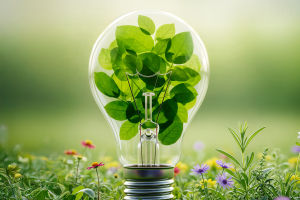What if nature had its own hidden light show, one that flickers deep in the ocean, blinks in forests, and twinkles across the night sky—without a single bulb or battery?
Bioluminescence is the breathtaking ability of living organisms to produce light from within, like something out of a science fiction dream. From fireflies that flash secret codes in the dark to waves that glow with each crashing ripple, these natural lights have fascinated humans for generations.
But behind the beauty lies a world of biological ingenuity—where light becomes a tool for survival, communication, and even deception.
What Is Bioluminescence?
Bioluminescence is the ability of living organisms to produce and emit light. This light comes from a chemical reaction involving a molecule called luciferin and an enzyme called luciferase. When luciferin reacts with oxygen, it produces light without heat, often in blue or green hues. This “cold light” is energy-efficient and can be used for various purposes like attracting mates, confusing predators, or luring prey.
Bioluminescent Creatures Around Us
Many marine animals, including jellyfish, squid, and certain fish, use bioluminescence to survive in the dark ocean depths. For example, the Hawaiian bobtail squid hosts glowing bacteria that help it hide from predators by matching the moonlight above. On land, fireflies light up summer nights with their rhythmic flashes to attract mates. Even tiny plankton called dinoflagellates create glowing waves that sparkle when disturbed, turning the sea into a natural light show.
Natural Light Shows: Where to See Bioluminescence
We are lucky to witness bioluminescence in spectacular places worldwide. New Zealand's Waitomo Caves glow with thousands of bioluminescent glowworms hanging from cave ceilings, creating a starry effect underground. Puerto Rico's Mosquito Bay is famous for its glowing waters caused by millions of dinoflagellates lighting up when disturbed. These natural wonders remind us of the beauty and mystery hidden in nature's depths.
How Bioluminescence Benefits Organisms
Bioluminescence serves many survival functions. Some animals use it as a defense mechanism—like squid that release glowing ink to confuse predators. Others use light to attract prey or communicate with each other in the dark. This ability evolved independently many times, showing how valuable it is for life in challenging environments like deep oceans or dense forests.
Human Uses of Bioluminescence
Humans have long been inspired by bioluminescence. Historically, glowing fungi helped guide travelers at night, and miners used fireflies as natural lamps. Today, scientists use bioluminescent bacteria to detect water pollution by monitoring changes in light emission. Researchers are also exploring bioluminescence for sustainable lighting, imagining glowing trees or buildings as eco-friendly alternatives to street lamps.
What Can We Learn from Bioluminescence?
We can learn a lot from bioluminescent organisms about energy efficiency, communication, and adaptation. Their ability to produce light without heat inspires innovations in lighting and medical imaging. Studying these natural light sources also helps us understand ecosystems and the delicate balance of life in oceans and forests.
What Do You Think About Nature's Glow?
We've just scratched the surface of the glowing mystery that is bioluminescence—nature’s living light with dazzling secrets and surprising uses. But there's so much more to uncover. Have you ever witnessed this glowing wonder firsthand? Or stumbled upon a story or discovery that left you amazed? We’d love to hear what sparked your curiosity—share your thoughts, sightings, or questions with us, and let’s keep the glow going.


